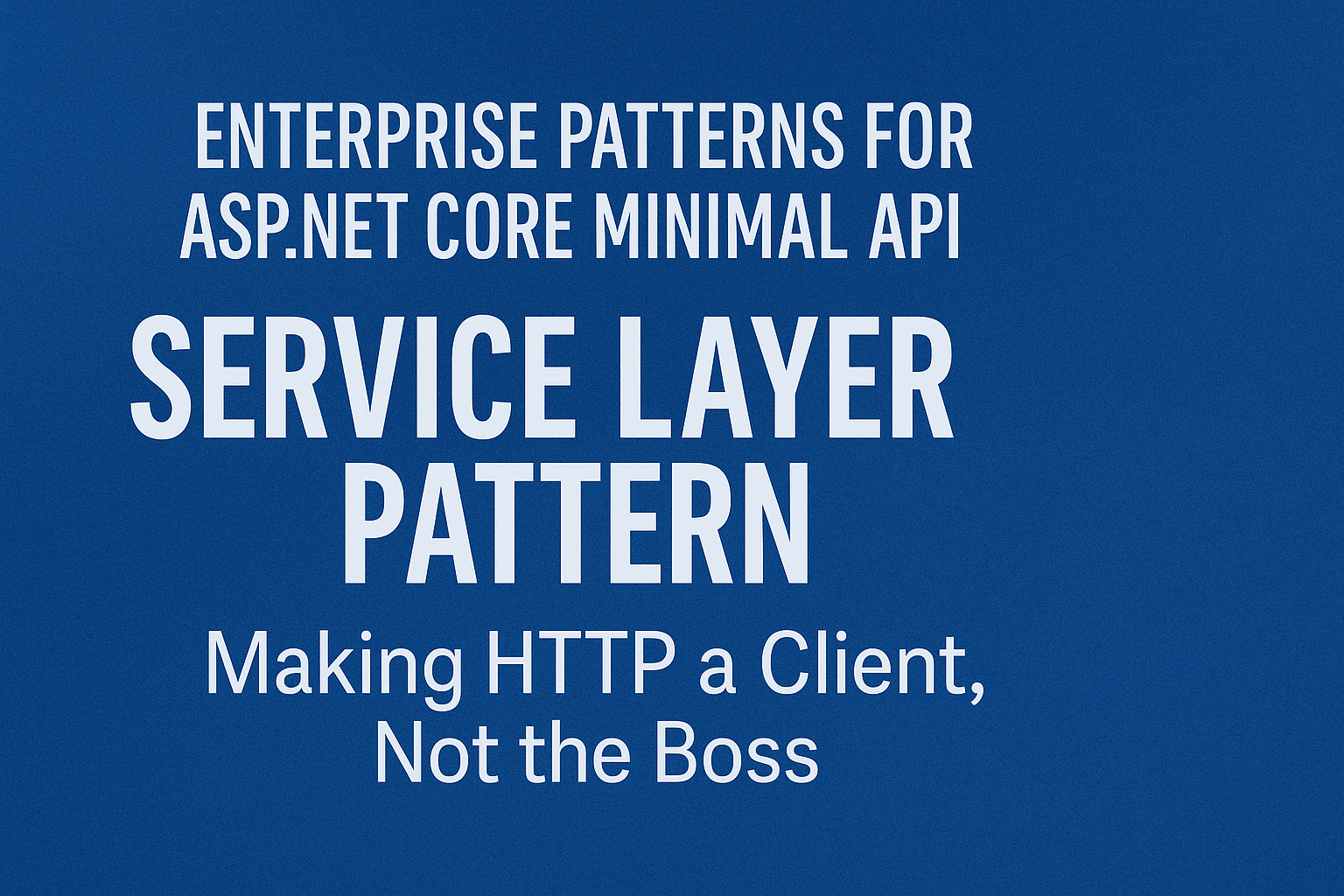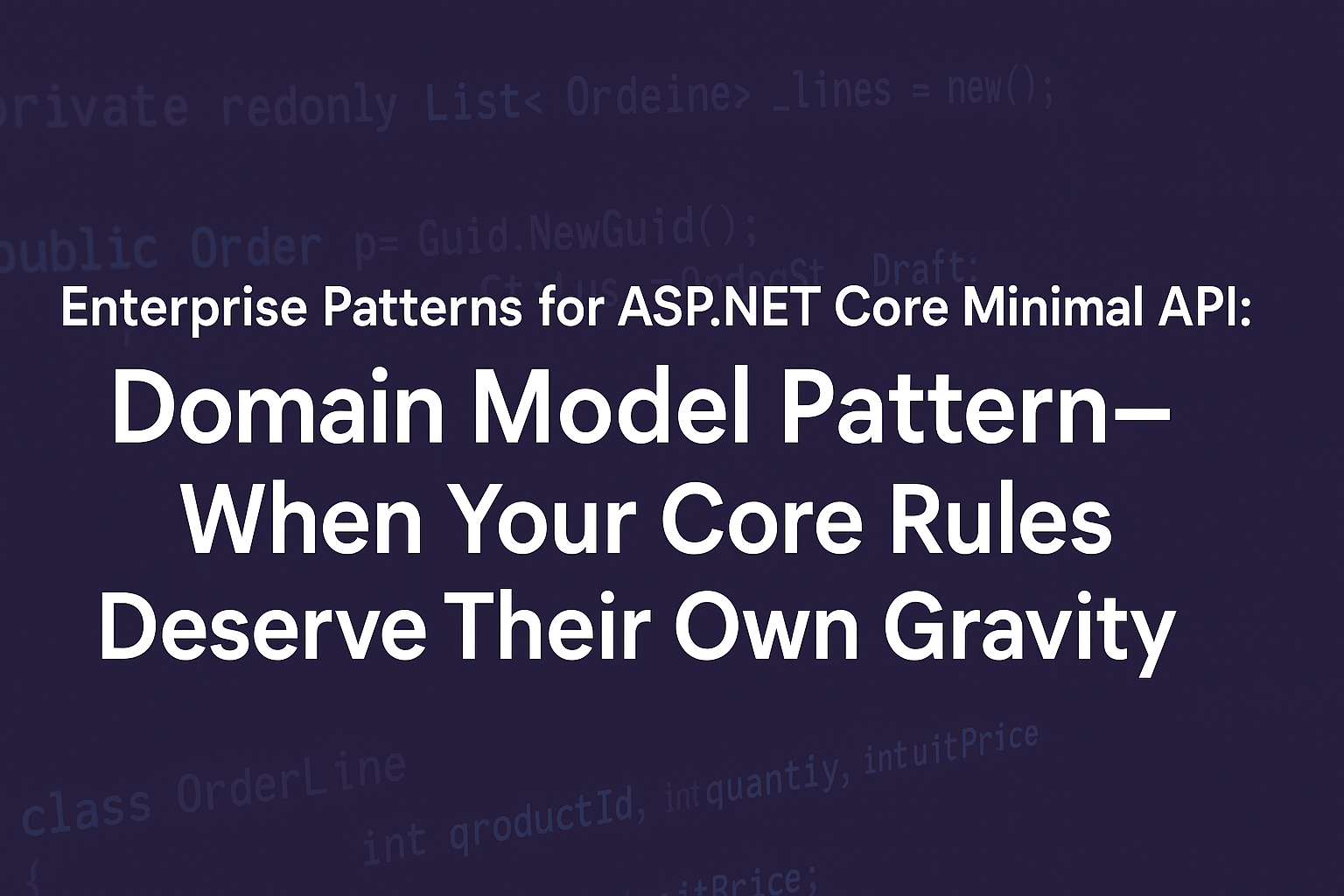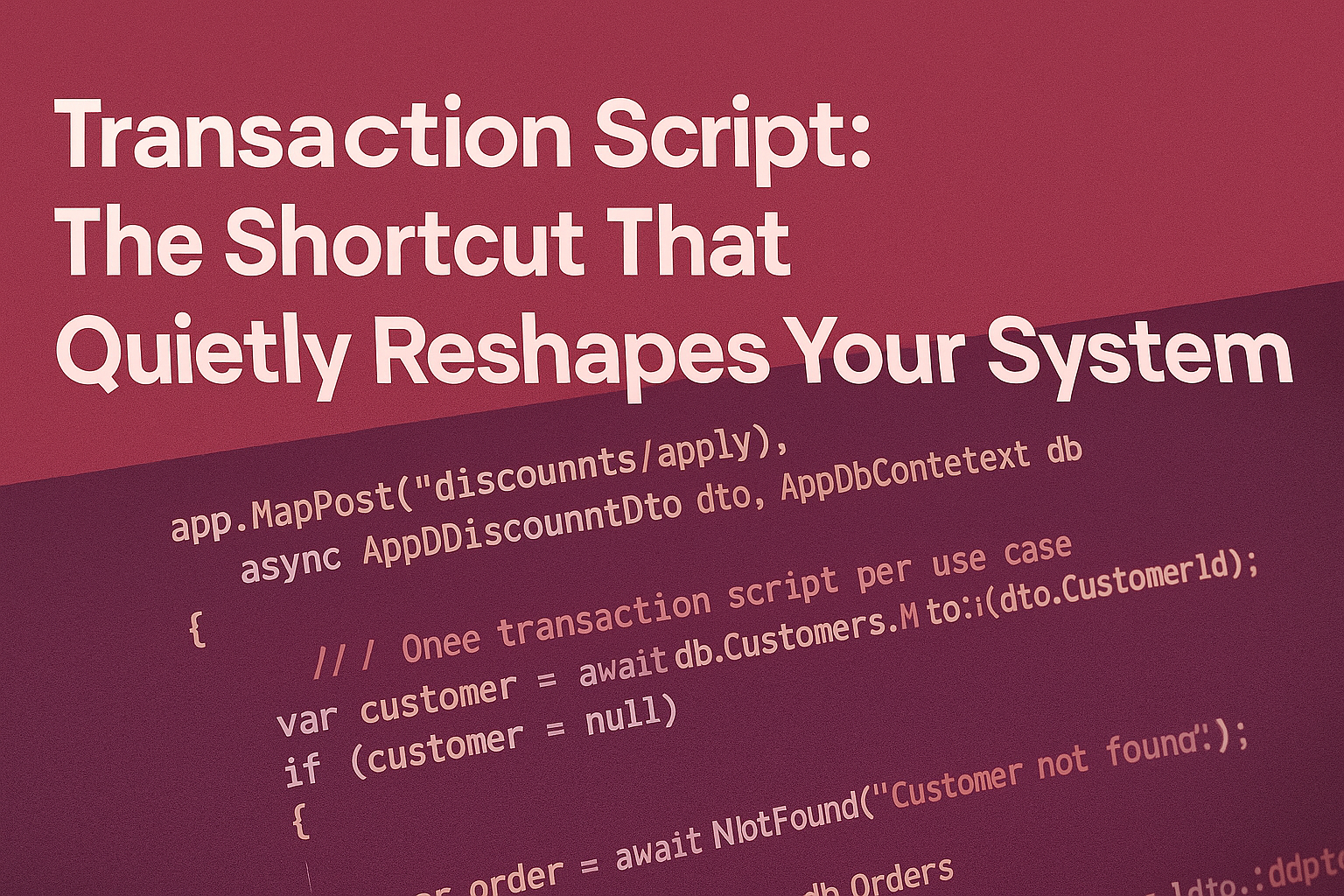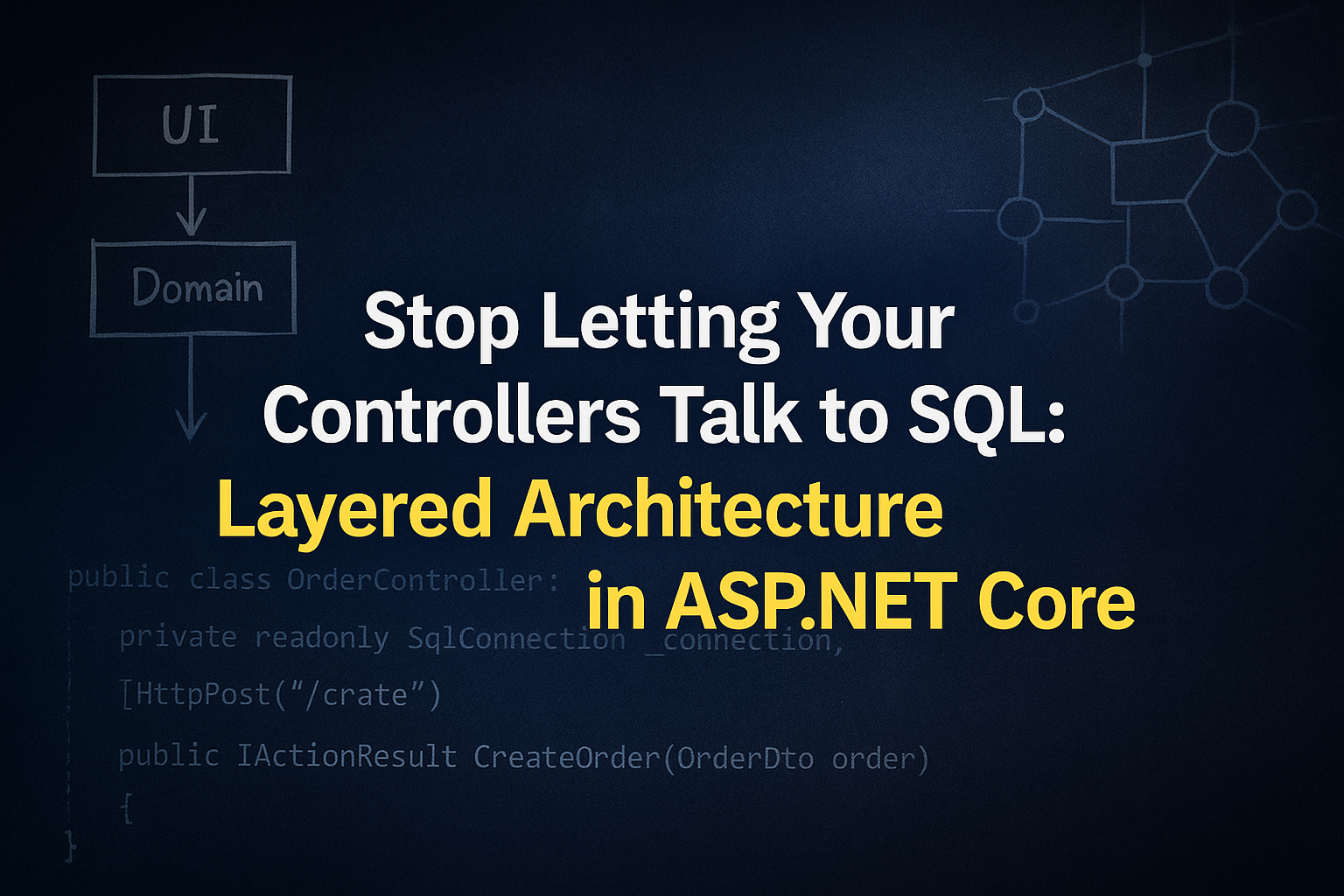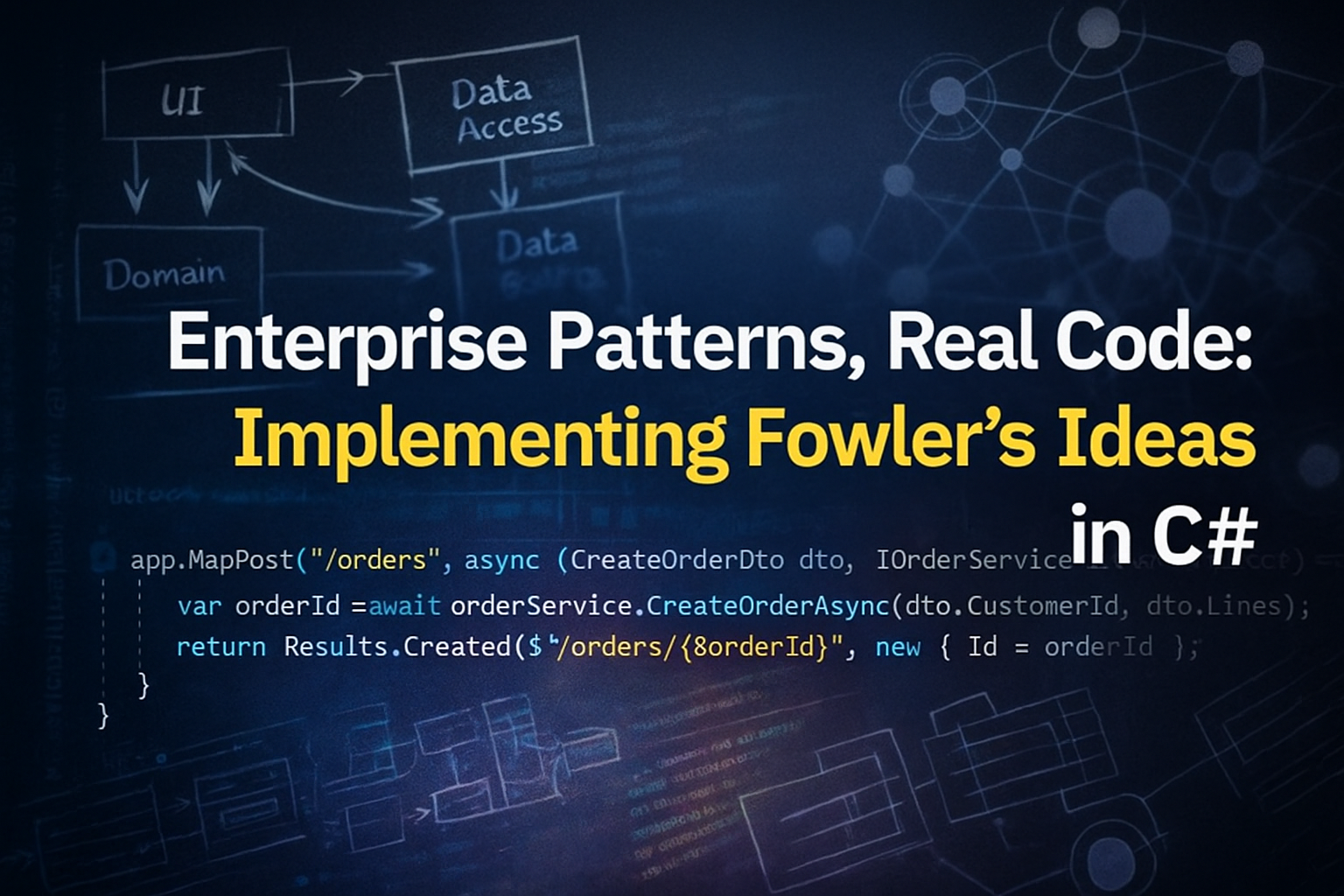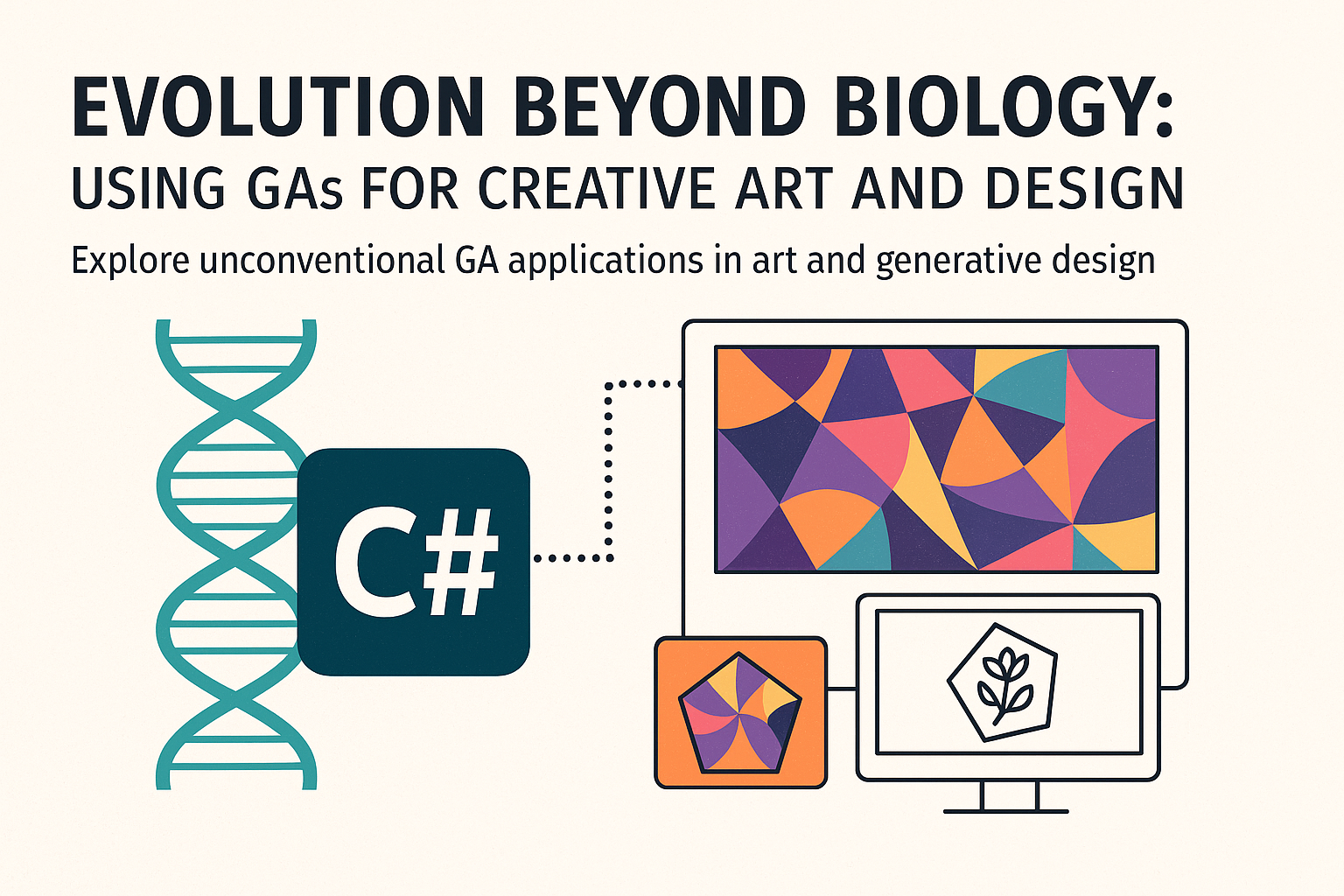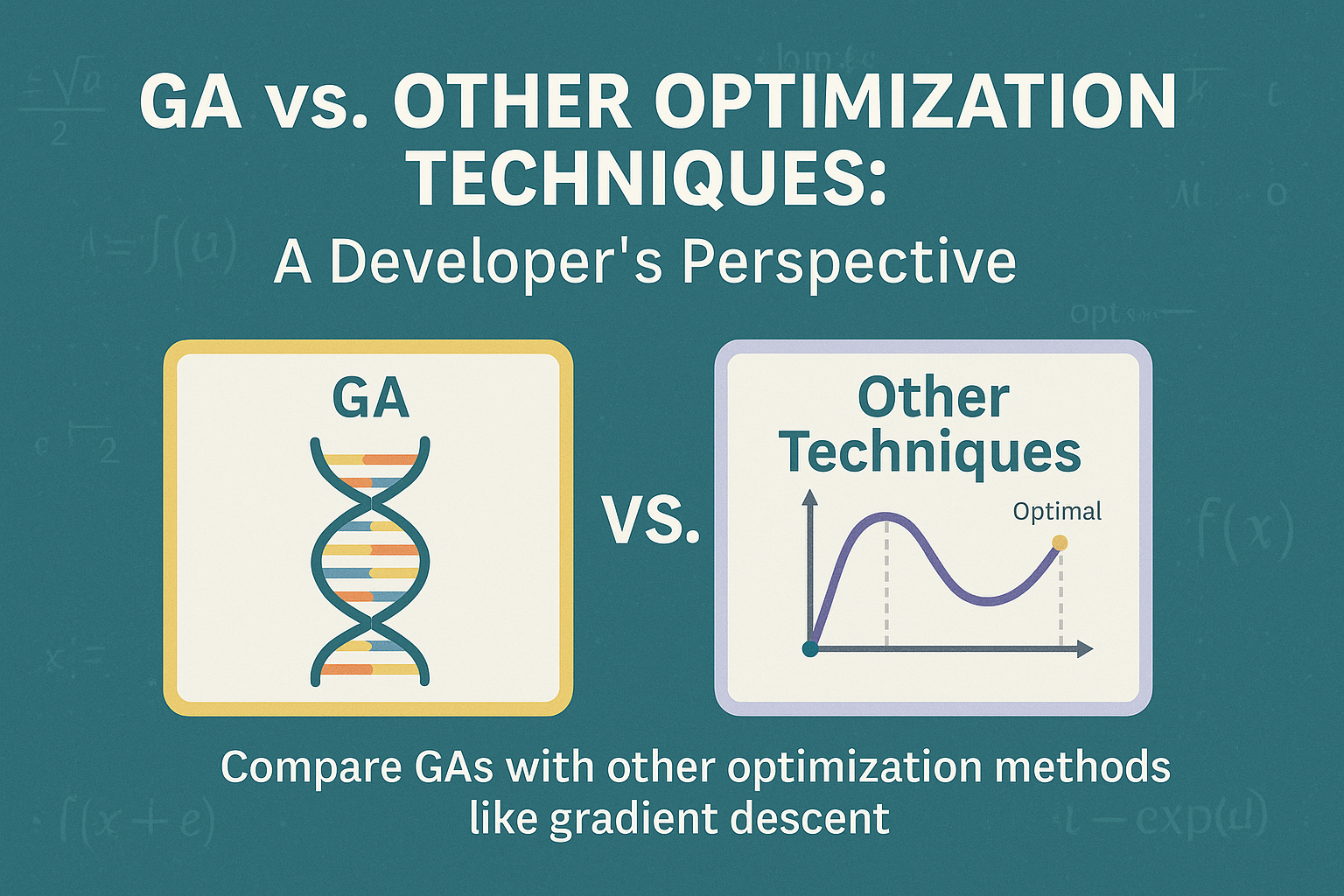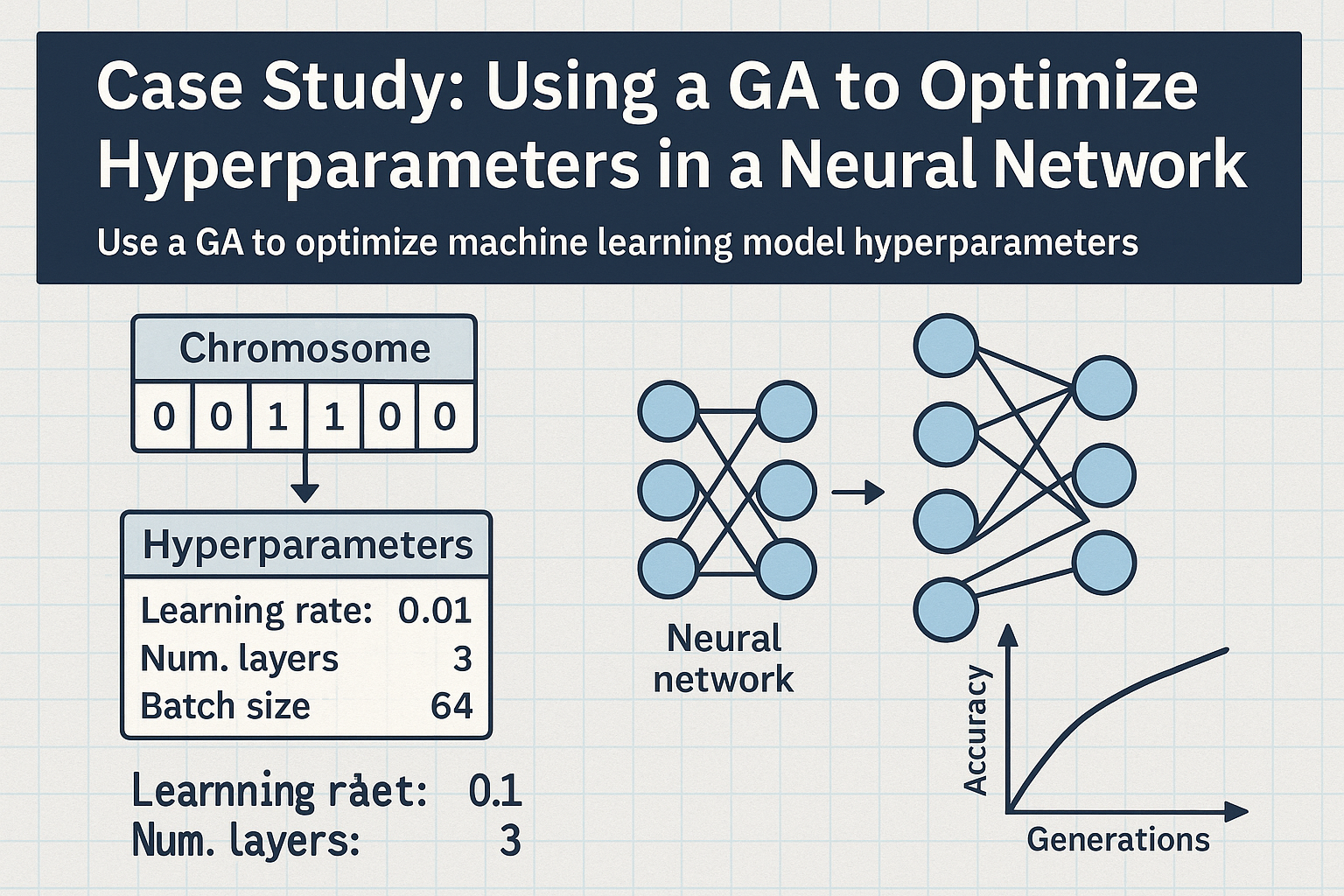Debugging Entity Framework Core: 8 Real-World Query Anti‑Patterns (and How to Fix Them)
I want to wish you a Merry Christmas, Happy Holidays, Happy Hanukkah, Happy Kwanzaa, and, finally, Debugging Entity Framework Core: 8 Real-World Query Anti‑Patterns (and How to Fix Them) I want to wish you a Merry Christmas, Happy Holidays, Happy Hanukkah, Happy Kwanzaa, and, finally, Happy Festivus. I will not be sharing my “Airing of grievances” or challenge anyone to …
Continue Reading
Enterprise Patterns for ASP.NET Core Minimal API: Service Layer Pattern – Making HTTP a Client, Not the Boss
Open a typical ASP.NET Core project, and you will often see the same shape: If you have ever tried to add a second client (a background worker, a message handler, or a gRPC API), you probably copied a large chunk of controller logic and hoped no one noticed. The Service Layer pattern exists to stop that. Instead of letting controllers …
Continue Reading
Enterprise Patterns for ASP.NET Core Minimal API: Domain Model Pattern – When Your Core Rules Deserve Their Own Gravity
Look at a typical enterprise ASP.NET Core application, and you often see the same pattern: If you need to know how orders work, you do not open a single file. You read controllers, queries, and database scripts until your eyes blur. The truth about the business lives everywhere and nowhere. The Domain Model is the pattern that reverses this arrangement. …
Continue Reading
Enterprise Patterns for ASP.NET Core Minimal API: Transaction Script Pattern – The Shortcut That Quietly Reshapes Your System
Picture this. Product wants a minor discount tweak: if an order total is below 100, no discount. You open an endpoint, add a conditional, save and push. Ten minutes, job done. Three months later, that simple rule exists in six different endpoints, each with its own tiny twist. Someone fixes a bug in two of them, forgets the others, and …
Continue Reading
Stop Letting Your Controllers Talk to SQL: Layered Architecture in ASP.NET Core
Walk into almost any long-lived enterprise codebase, and you will find the same pattern: At that point, adding a new feature feels like surgery without a map. You poke at one place, something bleeds somewhere else, and nobody is sure why. Layered architecture exists to stop that. In this post, we will walk through a practical version of Fowler’s layered …
Continue Reading
Enterprise Patterns, Real Code: Implementing Fowler’s Ideas in C#
Most enterprise systems already use patterns from Martin Fowler’s Patterns of Enterprise Application Architecture. The twist is that many teams use them without naming them, half implement them and then wonder why the codebase fights back. If your ASP.NET solution contains controllers that talk straight to SQL, services that return HTTP responses, and entities that call SaveChanges, you are already …
Continue Reading
Bringing Simplicity-First to the Page: My Upcoming Book
I am excited to share some big news. In the second half of 2026, my new book, titled Software Architecture Made Simple: A ‘Simplicity-First’ Approach to Software in the Age of Complexity, will be released. This book compiles years of blog articles, newsletters, and social media posts, consolidating them into a single, focused source of knowledge. Think of it as the …
Continue Reading
Day 35: Evolution Beyond Biology: Using Genetic Algorithms for Creative Art and Design
Genetic Algorithms are often associated with engineering, scheduling, or optimization problems, but their potential extends into the domain of art and design. When applied to visual composition, generative structures, or music synthesis, GAs can produce unexpected and compelling outcomes. These creative applications demonstrate that evolution-inspired algorithms are not limited to purely functional results. In this post, we explore how you …
Continue Reading
Day 34: Genetic Algorithms vs. Other Optimization Techniques: A Developer’s Perspective
Genetic Algorithms (GAs) are a powerful optimization strategy inspired by the principles of natural evolution. But they are far from the only technique in a developer’s toolbox. In this post, we will compare Genetic Algorithms with other widely-used optimization methods such as Gradient Descent, Simulated Annealing, and Particle Swarm Optimization. The goal is to understand when to use GAs and …
Continue Reading
Day 33: Case Study: Using a Genetic Algorithms to Optimize Hyperparameters in a Neural Network
Tuning hyperparameters for machine learning models like neural networks can be tedious and time-consuming. Traditional grid search or random search lacks efficiency in high-dimensional or non-linear search spaces. Genetic Algorithms (GAs) offer a compelling alternative by navigating the hyperparameter space with adaptive and evolutionary pressure. In this post, we’ll walk through using a Genetic Algorithm in C# to optimize neural …
Continue Reading

